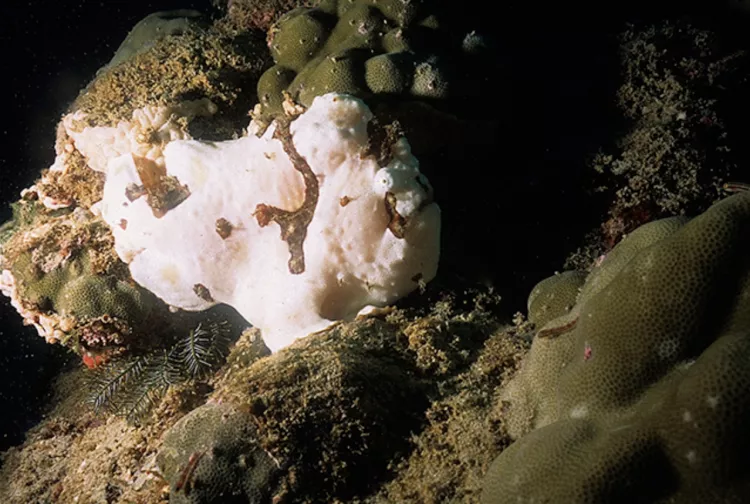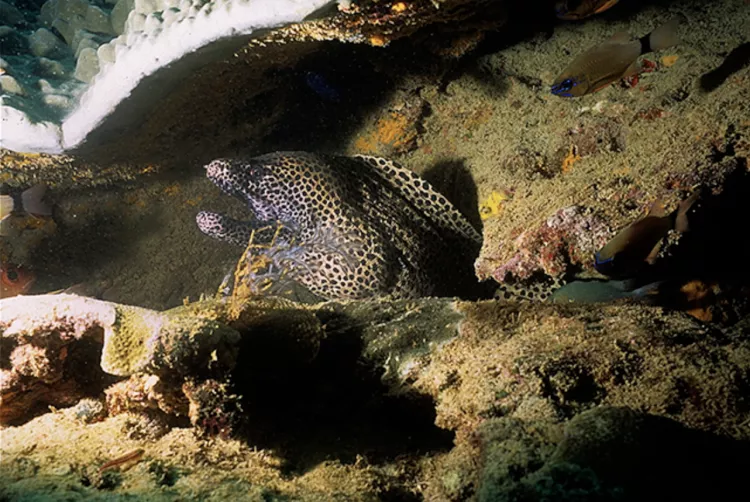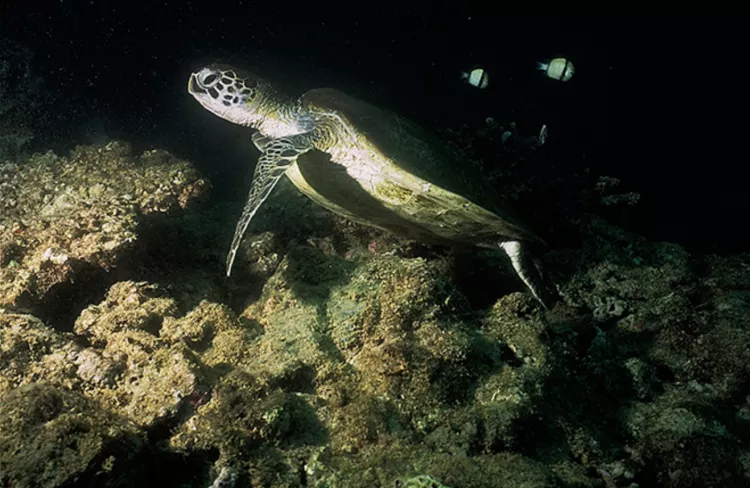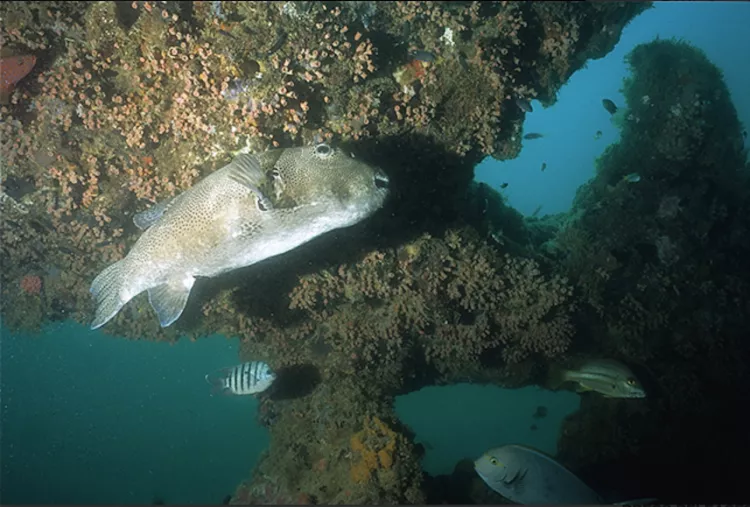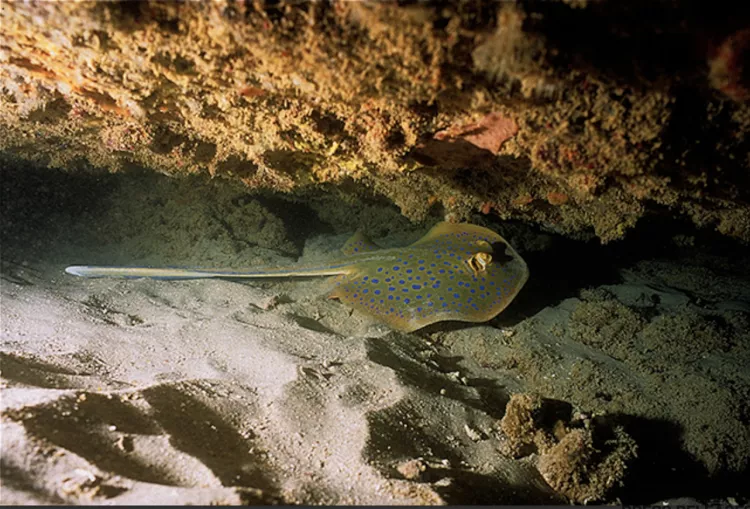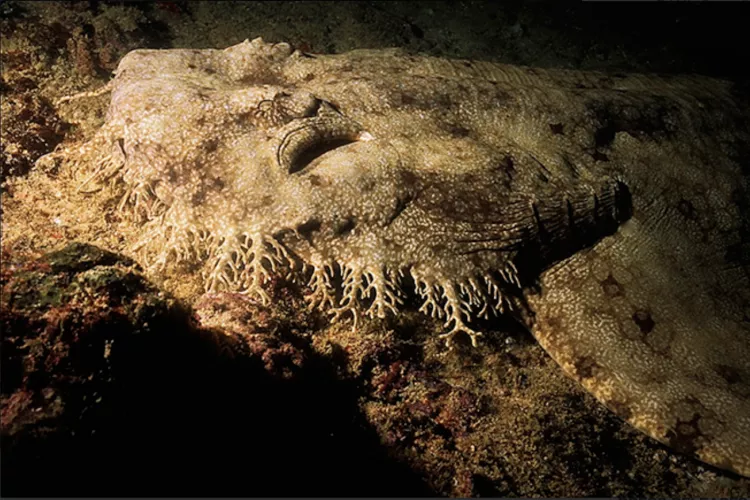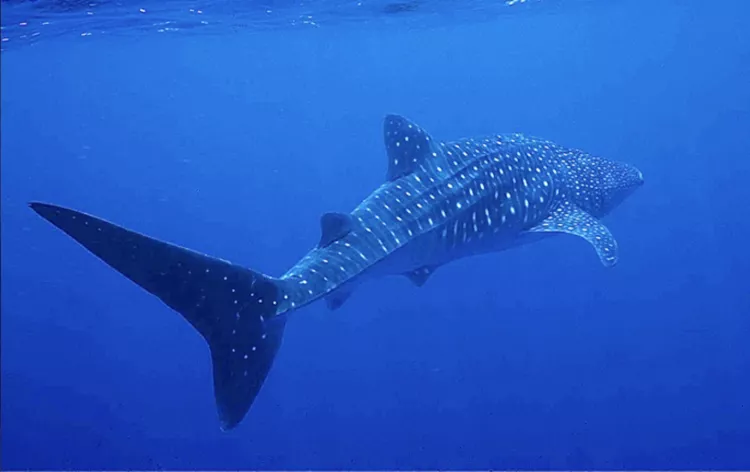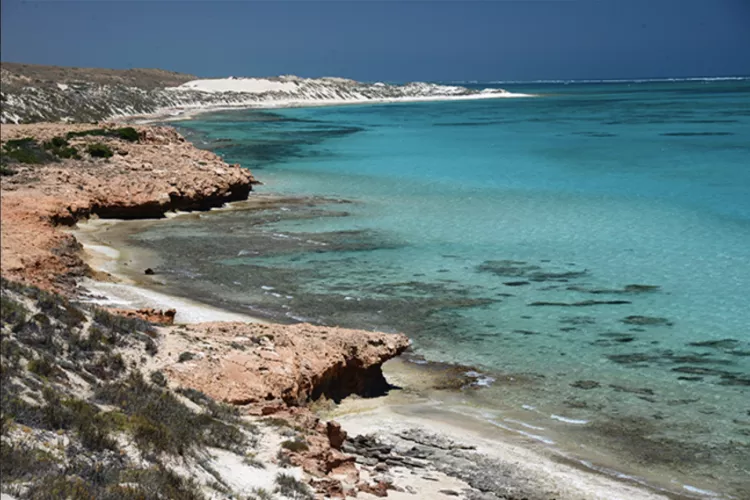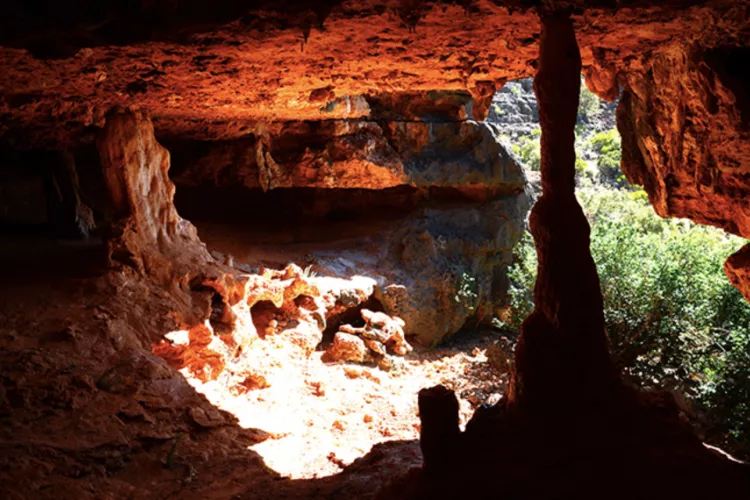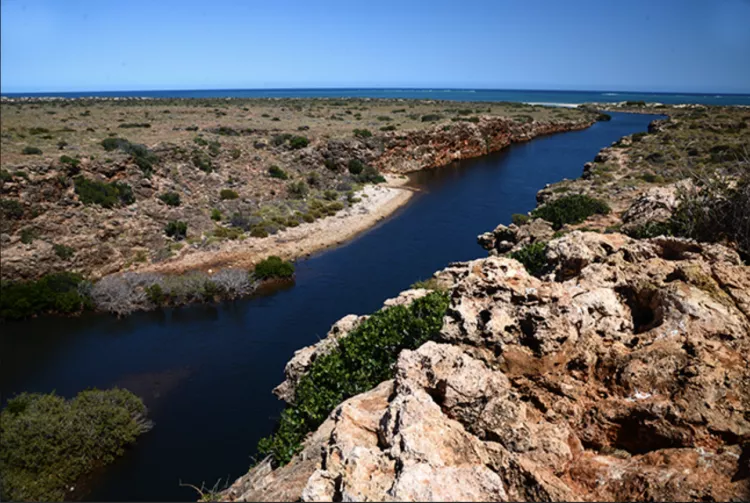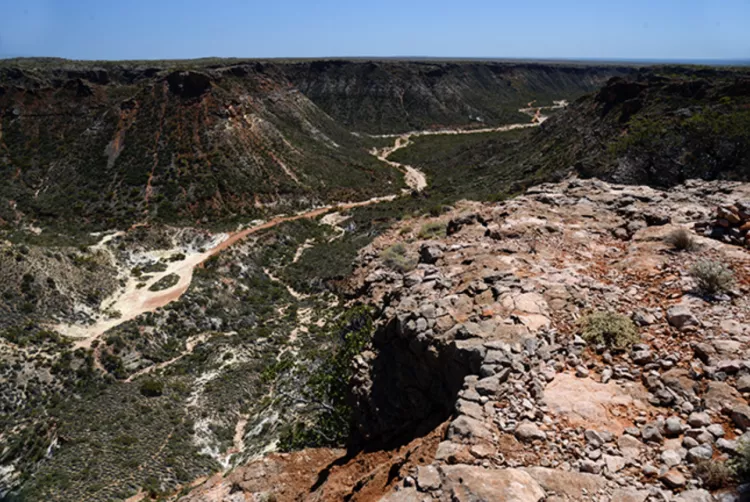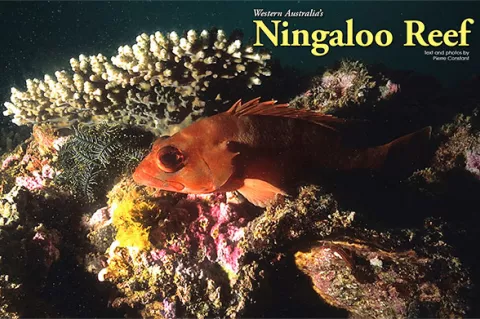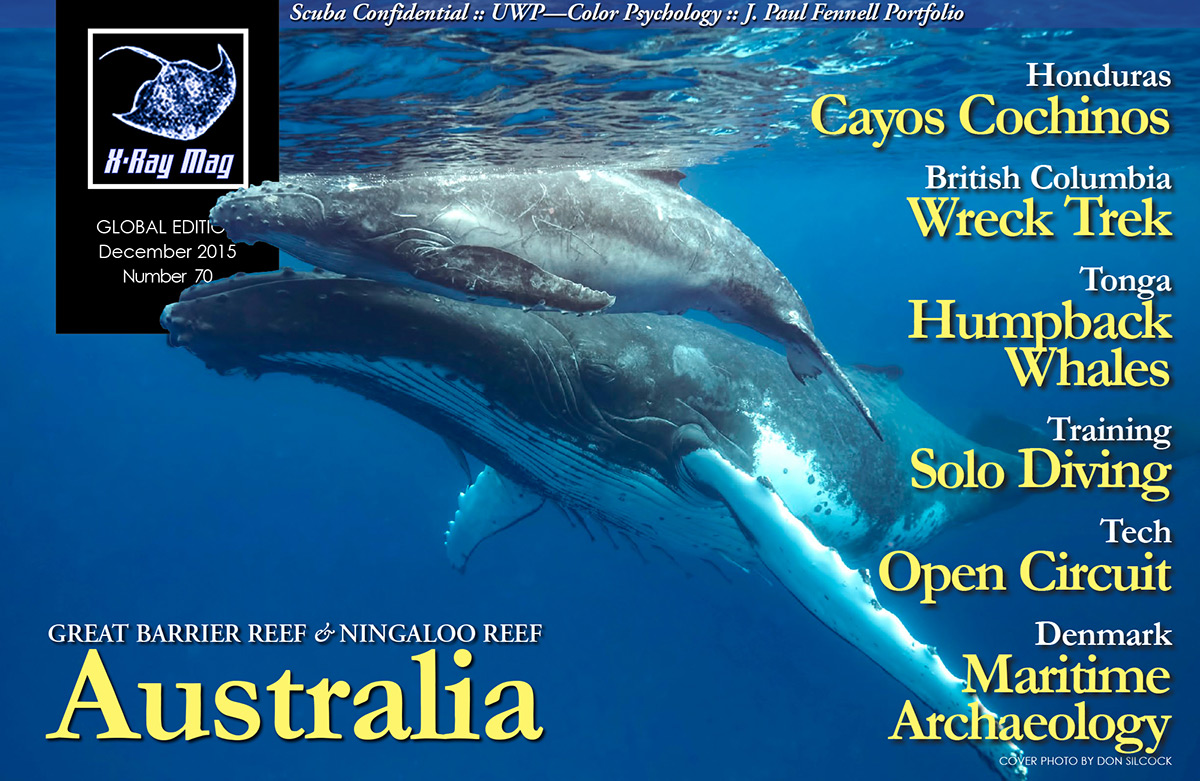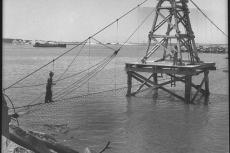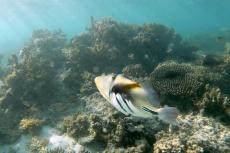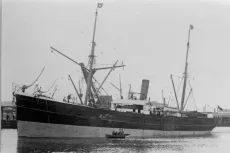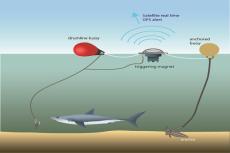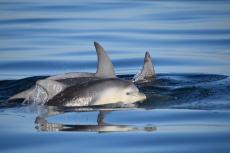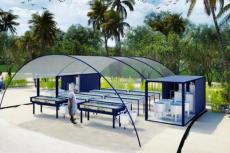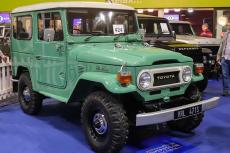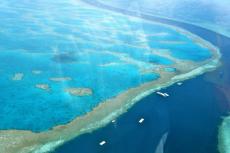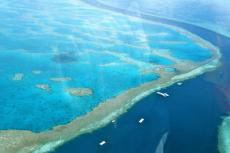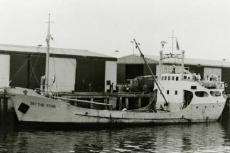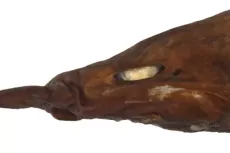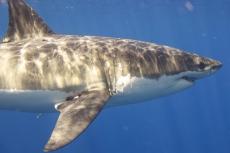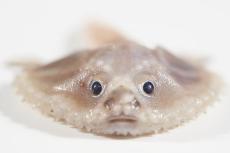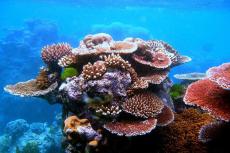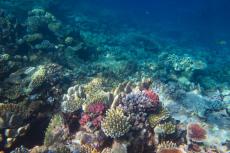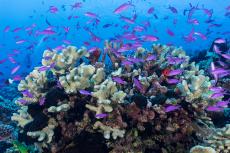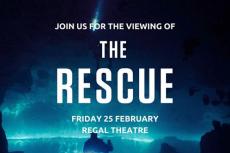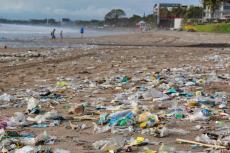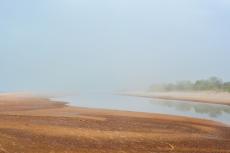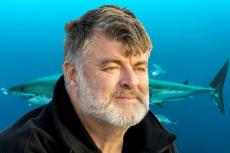On the coast of Western Australia, Exmouth is a little sleepy town on the Exmouth Gulf. Located at the threshold of the Indian Ocean, this is where you can find the renowned Ningaloo Reef, one of the longest and most virgin fringing reefs on the planet. A World Heritage Site since 2011, it hosts about 200 to 300 species of corals and 500 species of fish.
Contributed by
There are many ways to reach Exmouth. You may either fly in from Perth, capital of the state, or you can hire a car to cover the 1,300 km distance in one-and-a-half days. Personally, I choose to go overland from Adelaide in South Australia, crossing the famous Nullarbor Desert. From the top of the awesome cliffs, chances are that you will see humpback whales in season, pods of dolphins or even great white sharks cruising by. The transition of the landscapes is remarkable, and you can have a look at the sinkholes where intrepid cave divers of the CDAA (Cave Divers Association of Australia) make their explorations in freshwater.
A meeting of currents
Here, two notorious ocean currents meet: the warm Leeuwin Current and the cold Ningaloo Current. Coming down from the equator, and resulting directly from the South Equatorial Current that crosses the Pacific from east to west, the Leeuwin Current follows the western coast of Australia from north to south. It is dominant during the austral autumn from February to March, and brings tropical fishes and warm water organisms from Indonesia.
On the other hand, the Ningaloo Current originates from the Antarctic, flowing from south to north. On the continental plateau, this is a coastal current active during the winter months from June to December. It stimulates the marine environment with a bonanza of plankton, fishes and cold-water marine organisms.
The conjunction of these two currents creates a marine biodiversity of primary importance. It explains the migration of big marine animals that visit Exmouth and Ningaloo Reef at various times of the year. I am referring to the whale sharks, manta rays and humpback whales and, by consequence, their predators: the orcas and others.
Whale sharks
The whale shark (Rhincodon typus) arrives in the warm season in March to April, and will stay until July (sometimes even till August to September). Their presence is related to mass coral spawning, that is, coral reproduction and the resulting snowstorm of eggs.
The interaction of the Leeuwin and Ningaloo Currents induces a planktonic bloom, which is known as krill (fish eggs, crab larvae, gastropod and copepod larvae), but which also triggers nekton (shoals of small fish, like sardines and anchovies).
The whale shark cruises in the oceanic pelagic waters as much as in the coastal waters, around the equator, between 30° north to 35° south. It is associated with upwellings, highly productive areas, currents and eddies.
At Ningaloo, whale sharks measure anything between 4m to 12m in length. The whale shark is ovoviviparous, which means that it is born in its mother's belly, after hatching of the vitelline sac. Six markings (tags) effectuated on different specimens in 2005 have shown a migration towards Timor, Indonesia, Christmas Island and the Indian Ocean. I had a personal encounter with whale sharks in Christmas Island (south of Java), where they concentrate every year between October and March to feast on the incredible release of millions of eggs from the spawning of red land crabs.
At Exmouth, however, the observation of whale sharks is strictly controlled. A boat and its tender can only approach from the front at a minimum distance of 30m. Snorkeling enthusiasts have to maintain a distance of three meters from the creature, and of four meters from the tail. Snorkeling with whale sharks turns out to be a spicy bill, costing no less than AU$385 for an outing. It's a profitable industry, one that makes you think twice before handing over your cash.
Humpback whales
Late April to early May, at the beginning of the austral winter, humpback whales leave Antarctica to migrate north along the eastern and western coasts of Australia. The reproduction and the birth of the baby whales take place in June-July, between Perth and the Kimberly region, after an 11 to 12 months of gestation.
At birth, the baby is already four meters long and weighs nearly a ton. The mother’s milk has the consistency of chewing gum, with 35 percent fat. During the first months of its life, it gains 45 kilos per day. Once weaned after 11 months, it measures eight meters.
Following the suspension of whale hunting in 1963, the population of humpback whales (Megaptera novaeangliae) in Western Australia, has been estimated at 29,000 individuals. The mothers and calves return to Antarctica in August to September.
In Exmouth, whale-watching is also subject to strict rules. A boat cannot approach less than 100m, and never from the front or the rear. Divers are not permitted to go into the water for snorkeling. The cost of a whale-watching tour at sunset is about AU$70 per person.
Sea turtles
Three species of marine turtles come to lay their eggs on the beaches of Ningaloo, during the summer months between October and March. These are the green sea turtle (Chelonia mydas), the loggerhead sea turtle (Caretta caretta) and the hawksbill sea turtle (Eretmochelys imbricate). The Jurabi Turtle Interpretation Centre in the Cape Range National Park offers informative panels on the biology and ecology of these turtles, as well as information about the observation of turtles and the beaches where they nest. A code of conduct has been implemented, and the correct attitude is explained by a documentary at the Milyering Visitor Centre.
The green sea turtles and loggerhead sea turtles almost look alike, with the difference being that the loggerhead possesses five pairs of coastal scutes, whereas the green has only four pairs. The hawksbill is easily recognizable by its pointed head with a conspicuous beak.
Fishing
Fisheries operate in Exmouth and in Coral Bay in the Indian Ocean. They target the benthic resources, ie. the bottom-dwelling fishes, as well as the shrimps, scallops, abalone and rock lobster (Panulirus cygnus), which is endemic to Western Australia. Based on Exmouth Gulf, the shrimp fisheries of MG Kailis Seafood have a production of 700 tons per year, comprising five different species that are harvested between May and November. The brown tiger prawn (Pennaeus esculentus) is the most succulent.
Dive operator
The Exmouth Diving Centre is a branch of Dolphin Dive Fremantle, south of Perth. Operations are run in a very professional manner by Danielle, the manager. Strict Australian diving regulations are applied to the letter.
Originally a fishing charter, the Cougar Cat is now a dive boat measuring 14.7m long, 5.7m wide with a 1.3m keel, powered by twin Cummings 6-cylinder engines, 3,500 watts each. Kelsey, the skipper, is a Canadian woman who has been in Exmouth for five years, after working as a dive instructor for eight years in the Caribbean, Cook Islands, Vuanuatu and on the eastern coast of Australia. She welcomed us aboard for a complete briefing on the different aspects of the boat, the security and the diving before we left the mooring.
“I am the one and only person who can say the two magic words: 'Abandon ship!'” she said, with a sense of humor. “And the nearest exit is… wherever you see water!” she added, with a big laugh. Louise, the divemaster, is German, and Thibaut, the dive instructor on board, is French.
Depending on the weather forecast and sea conditions, two dive areas are used by Exmouth Diving Centre: Lighthouse Bay, located on the northwest of the Cape Range peninsula, just under the viewing point of Vlamingh Head, where the lighthouse overlooks the bay, and the Muiron Islands, two elongated islands located at the entrance of Exmouth Gulf, to the northeast.
Lighthouse Bay
My first dive at Lighthouse Bay was at a site called Gulliver. It was done on a shallow reef at the depth of 13.7m. The temperature of the water was 23°C. Thibaut rejoiced at the visibility of 10 to 12m: “The best you can get around here,” he said, beaming a reassuring smile.
Gulliver. The coral reef drew a figure eight, where it was easy to get lost. At once baffled by the profusion of marine life, I was astonished by the number of sea snakes in cream color with a brown head. “The bite is 10 to 15 times more venomous than the cobra,” I was told.
The brown-lined sea snake (Aipysurus tenuis)—a cousin to the Olive sea snake seen in the north and northeast of Australia—is endemic to Western Australia. It measures up to 1.20m, has fangs 7mm long and can live up to 15 years. It feeds on fish, fish eggs, cuttlefish, shrimp, crabs and molluscs, to which it inoculates its venom placidly. These reptiles, however curious, are absolutely harmless to human beings, swimming in-between your legs as if nothing happened.
Groupers were everywhere and quite large on average. Some were white, as if albinos. Schools of blue and gold snappers mingled with striped fusiliers. I was charmed by a honeycomb moray in its hole, white with black specks. But I stopped short in awe in front of a tasseled wobbegong shark, 1.5m long. It eyed me in a suspicious manner, playing dead under the overhang. I would not stick a finger in front of its nose, that's for sure! The highlight of the dive was a white frogfish with two red lines, absolutely mimetic on a coral bommie.
100+1000. The second dive took place at a site called 100+1000. It had mediocre visibility, due to the swell and sand in suspension. At a depth of 12m, the reef was carved like swiss cheese. I noticed a number of blue-spotted stingrays, plated sweetlips (Diagramma labiosum), emperors such as Lethrinus nebulosus, the long-nosed emperor (Lethrinus olivaceus) or the redthroat emperor (Lethrinus miniatus). Shrouded by a cloud of golden cardinalfish, (Apogon aureus), a whitetip shark dozed off in a swim-through. A few species of snappers were present, such as the blue and gold snapper, the blackspot snapper. A big jack zoomed through, a ravishing barramundi—white with black dots—showed up, looking like a happy clown. Anywhere you looked, there were whitish sea snakes cruising by leisurely.
Muiron Islands
Two days later, we were off to the Muiron Islands. Stretched north to south, and partly covered with sand, the rocky platform is dented by wave action. Since the Aussie rule did not allow me to dive solo behind the small group, I was given de facto Alexandre as buddy. He happened to be French and a photographer as well, so it was not that bad after all!
Whale Bone. The site of Whale Bone was stuffed with little caves, swim-throughs and overhangs. Sticking my head into the first hole, I came nose-to-nose with a wobbegong in a sleeping state.
The eastern side of the Muiron Islands is protected from the wind, but as soon as one rounds the southern tip of the island, the swell hits you, the sand whirls around you and photography becomes a nightmare!
With the conspicuous hump on their head, a few Batavia batfish sail by, under an overhang. Although not colorful, the reef was covered by soft corals of the genus Sarcophyton, in yellow or white color. Here and there were some copper color gorgonians, or Dendronephthya soft corals in purple, pink or yellow.
Dinner Plate. The eastern side of North Muiron Island was a field of sparse bommies, Acropora hard table corals or Porites mounds. The site was known as Dinner Plate. A few nudibranchs were visible, such as Phyllidia ocellata or Nembrotha kubaryana, black with green spots.
Diving was cancelled for a few days, firstly because the weather was not in favor, and secondly, because of the lack of participants. Thibaut informed me of a whale-watching sunset tour, which I was glad to join.
Whale watching
With about ten people on board, we headed for the entrance of Exmouth Gulf in the late afternoon. Following skipper Kelsey’s automatic briefing, Thibaut offered complimentary drinks to the happy passengers gathered at the bow, all eager to see a whale—for some, it would be their first. Beer and so-called champagne—alas, Australian Chardonnay-Pinot Noir—set the mood for a merry tune, while we waited.
Someone yelled, “Thar she blows!” and everybody rushed forward to marvel at the blow, or the dorsal fin, a rounding back, a pectoral fin standing tall as a grand salute. There was even a whale breaching, which involved the whale bringing its head out of the water to peep at the surroundings, and letting it fall back down in a loud splash. The reality was nevertheless frustrating for the photographer. With a distance of 100m, chances of getting a good picture was almost nil. A shaky hand or a moving boat—sometimes both—meant that blurred photos were the norm.
Ningaloo Marine Park
Long inhabited by the Aboriginees, the coral coast has witnessed a number of historic expeditions, military activities and maritime industry. The Ningaloo Marine Park starts 1,000km north of Perth, and stretches from the Red Bluff at 24°01 south, to the north of the Navy Communication Base near Exmouth, at 21°52’92” south and 114°19 east. It is managed via a joint cooperation between the Australian government and the Western Australian Department of Parks, Wildlife and Fisheries.
About 20 sanctuary zones have been defined, all along the coast. They favor the total protection of the species, at the same time allowing visitors the observation of the marine fauna. No commercial or recreational fishing is allowed. A population of dugongs had long been resident to the Gulf of Exmouth until 1999, before it migrated to Shark Bay. Most certainly disturbed by human activities.
More diving
With the weather forecast back to normal, I was looking forward to some more dives at Lighthouse Bay. The chosen site was that of Labyrinth.
Labyrinth. As the name indicates, it was a maze of passages, archways, swim-throughs, overhangs in the reef, surrounded by white sand, at a depth of 14m. The visibility was not good for flash photography, so I tried to stick with Louise the divemaster, in the hope of going in the right direction.
My first charming encounter was with a little school of threadfin pearl perch (Glaucosoma magnificum), which belongs to a unique family, the Glaucosomidae. It is rather squarish in shape, silver in color, with a big round black eye, very long and thin dorsal and anal fins, tapering towards the back. It reminded me of some kind of extraordinary Chinese fish. It was an exquisitely unusual species.
Once again, I spotted a tasselled wobbegong, lymphatic under an arch. Resting on a boulder nearby, a juvenile sea turtle eyed me comically, and there was a black Nembrotha kubaryana nudibranch with green dots and orange rhinophores. White-blotched Nankin groupers (Epinephelus multinotatus) spied on me from the corners of the reef. Emperors were close to angelfishes, snappers with sweetlips, and a yellow spotted blue boxfish fluttered about, following its fancy. It was hard to know which way to look.
Blizzard Ridge. Not far from there, the site of Blizzard Ridge was like an underwater sandstorm. I lost visual contact with Louise, who suddenly vanished beyond a sandy flat, where I was not about to wander. Later on, she confessed having met a 4m manta, which circled her a few times. As for me, I came across a large honey-colored stingray, locally known as "stingaree", with a few remoras in tow.
Two sea snakes showed up, exploring every hole in search of food. The first one suddenly played dead, as it looped into a funny pose, with head resting on the sand. Abandoning it to its dreaming, I gazed upon two Teira batfish cruising along the reef. Out of the blue, Louise caught up with me, like a naughty boy, and with a hand signal, directed me towards the anchor chain.
Topside excursions
Non-diving days are a good excuse to go exploring in the Cape Range National Park, which covers most of the Cape Range peninsula. A good tar road rounded the north point. There resting, like a rusty ghost, was the Mildura wreck. Vlamingh Head historic lighthouse overlooked the bay, embracing the panorama of the west coast.
There was a succession of sand dunes with sparse bush-like vegetation and white sand beaches, bordering turquoise bays and emerald green lagoons. A few of these beaches were nesting grounds for sea turtles at nighttime. Other sites, such as Turquoise Bay or Oyster Stacks, were good for snorkeling: the lagoon was between the coast and the fringing reef of Ningaloo offshore.
For the aficionados of trekking, Yardie Creek—at the end of the road—offered a superb walk on the top of the cliff with views of the Yardie River. This was where you might spot the charming black-footed rock wallaby in the rocks. Others might prefer cruising with a kayak on the river itself.
Oriented north to south, the ridge of Cape Range National Park was an ancient dolomite karst environment, stuffed with caves and carved by canyons. Two tracks were accessible for two-by-four vehicles on the east side. The one to Shothole Canyon came to a dead end. The other one to Charles Knife Gorge, 21km south of Exmouth, was more spectacular, with numerous viewpoints. This dirt road led to the Badjirrajirra Loop Trail, which takes you on top of the plateau to an impressive viewpoint over Shothole Canyon. For a fit trekker, it is a two-hour round trip, under the sun, so come prepared! ■
The author’s thanks go to Exmouth Diving Centre (www.exmouthdiving.com.au). Pierre Constant has been a naturalist, photographer, consultant and travel addict for 40-plus years, as well as an expedition organizer, cave diver and author of four books and 150 articles. For more information, visit: Calaolife.com and Scubadragongalapagos.com
SOURCES:
Cape Range National Park Milyering Visitor Centre and Jurabi Turtle Centre

